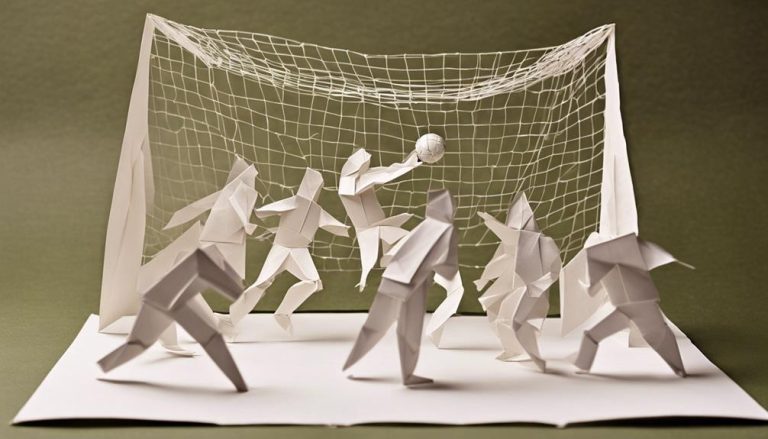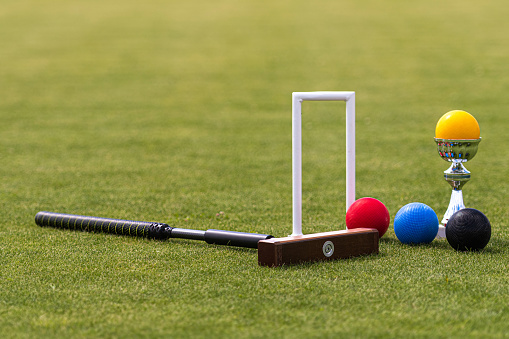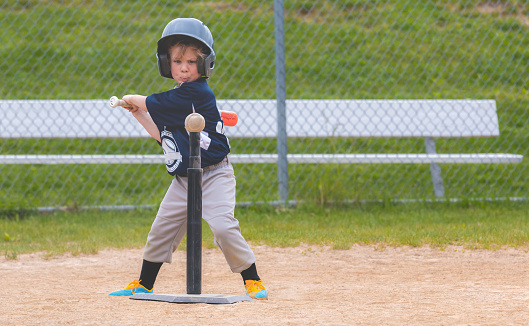General Rules of Fistball
You're stepping onto the fistball court, and mastering the game's rules is key to dominating the competition. The court is 50 meters long and 20 meters wide, divided into two halves with specific markings. You'll need to understand team dynamics and player roles, with five players in each team, each with unique responsibilities. Your objective is to score points by landing the ball in the opponent's court, with a minimum lead of two points required to win. Now that you've got the basics covered, it's time to dive deeper into serving strategies, faults, and penalties to take your gameplay to the next level.
The Fistball Court Dimensions
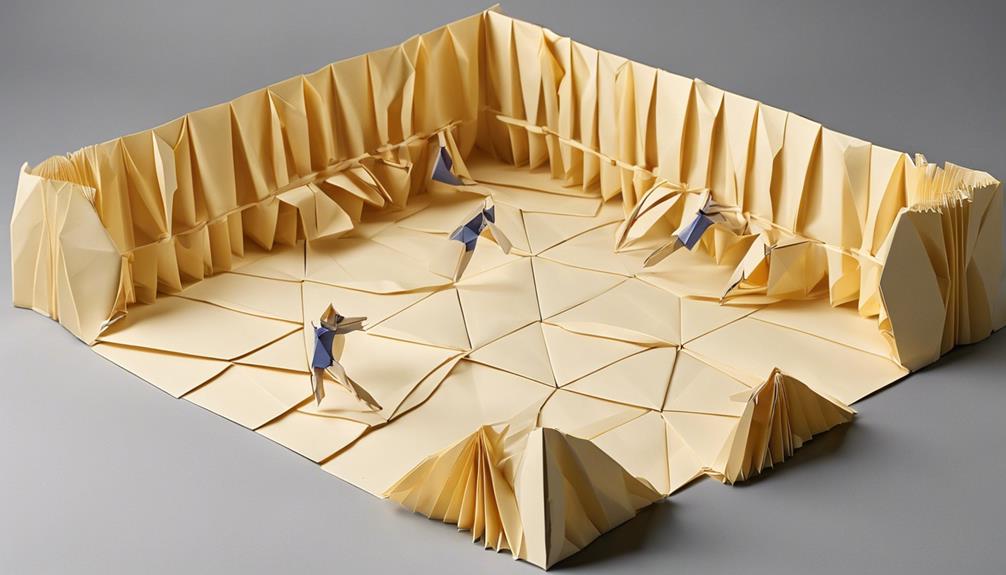
You'll be playing on a court that's 50 meters long and 20 meters wide, divided into two halves by a center line. This is the standard court layout for fistball, and vital to understand the dimensions to optimize your gameplay. The court is marked with field markings that define the playing area, including the center line, attack lines, and service zones. The attack lines are 15 meters from the center line, while the service zones are 3 meters from the attack lines.
When you step onto the court, you'll notice the field markings that guide your movements. The court layout is designed to facilitate fast-paced, high-energy gameplay. As you move around the court, you'll need to be aware of the field markings to avoid faults and maximize your team's scoring opportunities. Mastering the court layout and field markings is key to dominating the game. By understanding the court dimensions and markings, you'll be better equipped to outmaneuver your opponents and secure victory.
Teams and Player Positions
Mastering team dynamics and player positions is essential in fistball, as a well-coordinated team with each player knowing their role can make all the difference between victory and defeat. As you assemble your team, you'll need to assign players to specific positions. A standard fistball team consists of five players: three in the back row (left, center, and right) and two in the front row (left and right). Understand that each position has unique responsibilities. The back-row players, also known as defenders, focus on blocking and clearing the ball. The front-row players, or attackers, specialize in spiking and scoring. It's vital to identify your strengths and weaknesses to optimize team dynamics. Assign players to positions that play to their strengths, and work together to develop strategies that compensate for weaknesses. Remember, effective communication and adaptability are key to success. By mastering team dynamics and player roles, you'll be well on your way to fistball victory.
Game Objective and Scoring
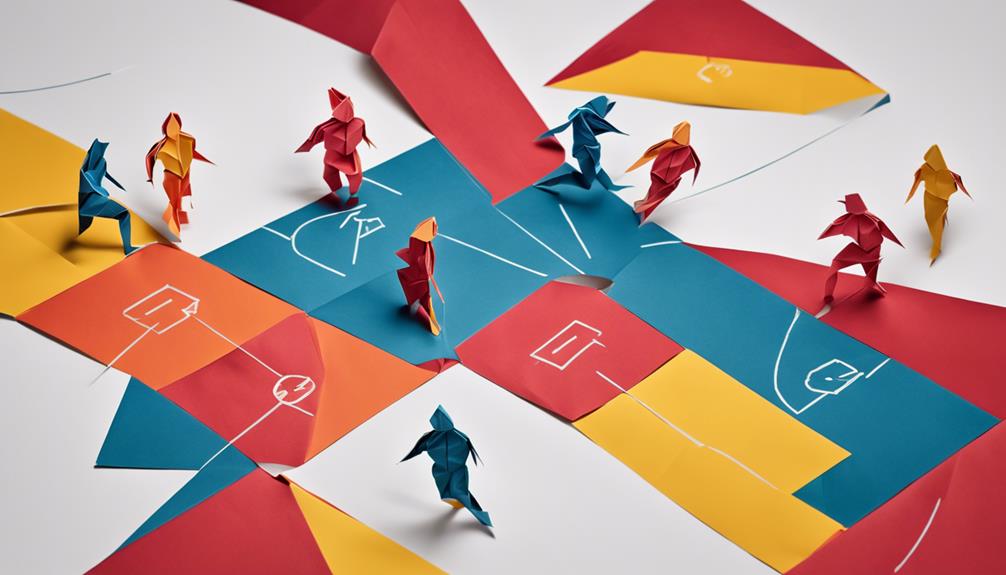
As you step onto the court, your primary objective is to score points by successfully landing the ball in the opponent's court. You'll earn a point when the opposing team fails to return the ball or makes an error, and you'll need to win by at least a two-point margin. To keep track of your progress, you'll need to understand the scoring system, which we'll break down in detail.
Gameplay Basics
Playing fistball, your objective is to hit the ball over the net in such a way that your opponent cannot return it, scoring a point for your team. To achieve this, you'll need to develop effective gameplay strategies. This includes mastering various shots, such as the forearm pass, overhead shot, and spike. You'll also need to work on your footwork, agility, and spatial awareness to outmaneuver your opponent.
As you play, remember that the referee plays a vital role in ensuring a fair game. They'll monitor the game, enforcing rules and keeping track of scores. If you're unsure about a call, you can appeal to the referee, who'll make the final decision. Remember, the referee's role is to facilitate a smooth and enjoyable game, so respect their authority and focus on your gameplay.
Fistball Point Systems
You'll earn points by successfully landing the ball on your opponent's court, with the objective of reaching 11 points with a minimum lead of two points over the opposing team. This means you'll need to win by at least two points, so if the score is 11-9, play continues until one team leads by two points. Understanding point values is vital in fistball. A point is awarded when your opponent fails to return the ball to your side of the court, hits the ball out of bounds, or makes an error that results in the ball hitting the ground. Scoring nuances come into play when a team commits a fault, such as touching the net or crossing the center line, resulting in a point for the opposing team. Additionally, if the serving team wins a rally, they score a point and continue to serve. If the receiving team wins, they score a point and become the new serving team. Mastering these point systems will give you a competitive edge in the game.
Scorekeeping Essentials
Your primary objective in a fistball game is to reach 11 points with a minimum lead of two points over your opponent, understanding that scoring nuances can greatly impact the game's outcome. As you aim for victory, grasping the scorekeeping fundamentals is vital to maximize your chances of success.
When it comes to scorekeeping, accuracy is key. You should keep track of points scored, sets won, and games played. Remember, a fistball game is typically best two out of three sets, with each set won by the team that first reaches 11 points with a minimum lead of two points.
To maintain fair play, the referee plays a pivotal role in scorekeeping. They're responsible for tracking scores, monitoring timeouts, and enforcing game rules. As a player, respecting the referee's decisions and understanding their role in upholding the game's integrity is vital.
Scorekeeping tips include clearly communicating with your opponent and the referee about scores and timeouts. Stay focused and avoid disputes by maintaining an accurate scorecard throughout the game. By mastering scorekeeping fundamentals, you'll be well-equipped to navigate the intricacies of fistball and emerge victorious.
Serving and Rallies Rules
In a fistball match, the serve is initiated when the server tosses the ball upward and strikes it with their fist, aiming to clear the net and land it in the opponent's court. As you prepare to serve, consider your Serving Strategies: will you opt for a powerful, aggressive serve or a more strategic, angled shot? Remember, your goal is to make it difficult for your opponent to return the ball.
Once the serve is in play, the Rally Tactics take over. A successful rally requires quick reflexes, agility, and effective communication with your teammates. As you face your opponent's return, focus on precise positioning, timing, and coordination to outmaneuver them. Keep in mind that a rally can end in one of two ways: either you or your opponent fails to return the ball, or a team scores a point by successfully landing the ball in the opponent's court. Mastering the art of serving and rallying will give you a significant edge in the game, so practice your skills and develop a keen sense of strategy to outsmart your opponents.
Faults and Let Calls

As you learn about faults and let calls in fistball, you'll discover there are specific types of faults that can occur during a rally. You'll need to understand the criteria for a let call, which can greatly impact the game's momentum. By grasping these concepts, you'll better comprehend the consequences of faults and how they influence the game's progression.
Types of Faults
Faults, which can substantially impact gameplay, occur when a player fails to execute a valid play. As you venture into the world of fistball, understanding the different types of faults that can affect the game's outcome is vital. A fault can be classified into two main categories: technical faults and tactical faults. Technical faults occur when a player violates the rules, such as hitting the ball twice in a row or touching the net. On the other hand, tactical faults result from poor decision-making, like hitting the ball out of bounds or into the net.
To identify and address faults, referees undergo rigorous training, involving fault analysis. This process involves dissecting the play to determine the root cause of the fault. By doing so, referees can develop a deeper understanding of the game and make more accurate calls. As a player, recognizing the different types of faults can help you refine your skills and improve your overall performance. Remember, a thorough understanding of faults is vital to mastering the game of fistball.
Let Call Criteria
You'll need to understand the let call criteria to distinguish between faults and let calls, as a subtle difference in the ball's trajectory can markedly impact the game's momentum. A let call is made when the ball hits the net but still lands in the opponent's court, and the rally continues. To maintain call consistency, you must consider the let criteria: the ball's contact point with the net, its trajectory, and its landing spot. If the ball hits the net but still falls within the opponent's court, it's a let call. However, if the ball hits the net and falls outside the court or doesn't clear the net, it's a fault. Remember, the let call criteria are in place to maintain fair play and guarantee that the game flows smoothly. By understanding these criteria, you'll be able to make accurate calls and maintain the game's momentum.
Fault Consequences
When you commit a fault, the opposing team scores a point and serves next, emphasizing the importance of minimizing faults to maintain a competitive edge. Faults can be detrimental to your team's chances of winning, making it vital to understand the consequences of committing one.
In fistball, fault tolerance is key to success. A high fault tolerance means you're less likely to give away easy points to your opponents. To improve your fault tolerance, conduct a thorough consequence analysis of your gameplay. Identify areas where you're prone to faults and work on strengthening those weaknesses.
Substitutions and Replacements
In fistball, you're allowed to make substitutions during a game, replacing a teammate on the court with a player from the bench. This can be done to give players a break, to change your team's strategy, or to respond to an injury. When it comes to injuries, you'll need to follow the injury protocols outlined by the tournament or league organizers. These protocols will dictate how injuries are reported, treated, and cleared for return to play.
As the coach, you'll need to make strategic decisions about when to substitute players and who to bring in. You might choose to replace a player who's struggling or bring in a specialist to serve or block. Your decisions will impact the game's momentum and outcome, so think carefully about your substitutions. Remember to communicate clearly with your players and the referees to facilitate a smooth shift. By making smart substitutions, you can gain an edge over your opponents and increase your chances of winning.
Game Interruptions and Delays

During a fistball match, stoppages in play can occur due to injuries, disputes, or other incidents, and you, as the coach, must be prepared to adapt to these game interruptions and delays. These interruptions can profoundly impact the flow of the game and your team's performance.
To minimize the impact of these interruptions, having a solid understanding of the rules and regulations governing game interruptions and delays is vital. This includes knowing when to call timeouts, how to navigate disputes with the referee, and how to adjust your strategy in response to interruptions.
Some key considerations for managing game interruptions and delays include:
- Developing effective timeout strategies to regroup and reassess during stoppages in play
- Understanding referee decisions and how to respond to their calls
- Preparing your team to adapt to changing circumstances and unexpected interruptions
Fouls and Misconduct Penalties
Understanding the nuances of fouls and misconduct penalties is vital, as you'll need to navigate these complex rules to minimize their impact on your team's performance. Foul severity can greatly affect the outcome of a match, and it's vital to grasp the different types of fouls and their corresponding penalties.
There are two categories of fouls: minor and major. Minor fouls, such as touching the net or crossing the center line, result in a warning or a temporary suspension. Major fouls, including physical contact or intentional obstruction, can lead to a player's disqualification or even a team's default.
Penalty mitigation is key to minimizing the impact of fouls on your team's performance. If you commit a foul, it's vital to acknowledge the mistake and take immediate action to prevent further infringements. This can include adjusting your playing style, communicating with your teammates, and adapting to the referee's decisions.
Winning the Game and Match

You'll need a thorough grasp of scoring rules to win a game and match, as the margin between victory and defeat can be razor-thin. A single mistake can cost you the game, so stay focused and adapt to the game's momentum.
To develop an effective match strategy, consider the following key factors:
- Game momentum: Identify and capitalize on shifts in momentum to gain an advantage over your opponent.
- Scoring opportunities: Seize every chance to score, as each point can be vital in a tight match.
- Adaptability: Be prepared to adjust your strategy mid-game in response to your opponent's tactics, as vital as staying flexible is to success.
Frequently Asked Questions
Can Players Wear Jewelry During a Fistball Game?
"Imagine a volleyball player's shiny necklace getting tangled in the net – not a good look! You can express your personal style, but when it comes to wearing accessories during a game, safety comes first, so ditch the jewelry to avoid any hazards."
Are There Any Specific Ball Pressure Requirements?
You'll need to ensure the ball meets specific inflation standards; for optimal play, it's crucial to conduct regular pressure checks to maintain the recommended pressure range of 0.4 to 0.6 bar, avoiding under or over-inflation.
Can Coaches Communicate With Players During a Match?
As you step onto the court, remember that coaches can communicate with players during a match, influencing your Sideline Strategy and Game Psychology; use this to your advantage, adapting tactics and mindset to outmaneuver opponents.
Are There Any Restrictions on Team Uniforms and Logos?
When it comes to team uniforms and logos, you'll find that there are restrictions in place to maintain brand identity and avoid conflicting sponsorship deals, ensuring a level playing field for all teams.
Can Players Take Breaks During a Match for Injuries?
Imagine you're a marathon runner suddenly crippled by a cramp; you'd want a breather, right? In fistball, you can take injury timeouts, but only with medical clearance, ensuring your safety and a fair game.



